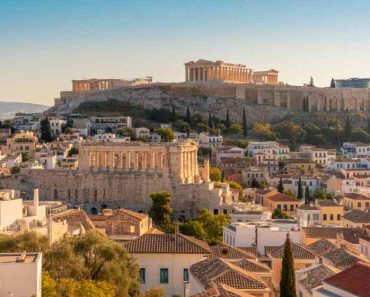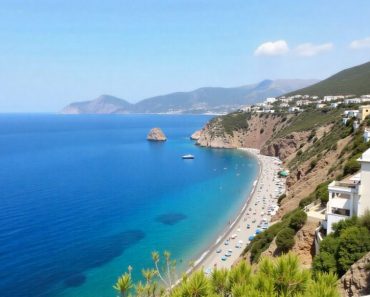
Mount Athos, a revered spiritual destination in northern Greece, continues to attract growing numbers of visitors. While some monastic leaders and officials note that the rising crowds can affect the mountain’s tranquil atmosphere, many pilgrims are drawn by the promise of quiet reflection and spiritual renewal.
This pattern has become more noticeable over the past two years, as regional instability in the Middle East has prompted Orthodox pilgrims from Eastern Europe to look for safer, peaceful alternatives to traditional holy sites like Jerusalem. In a world that often feels uncertain and stressful, Mount Athos offers many a sanctuary—a place to reconnect, find calm, and seek guidance amid life’s challenges.
A shift in pilgrim patterns
Recent figures provided to the Holy Community of Mount Athos show that in the first six months of 2025 alone, approximately 85,000 pilgrims entered the monastic state, up from 75,000 during the same period in 2024. These numbers only include individuals issued pilgrimage permits (“diamonitirion“) from the departure points of Ouranoupoli or Ierissos.
Not included in these figures are thousands of workers entering Athos with special work permits—estimated at an additional 4,000 people in the same period—due to significant restoration and construction work underway on monasteries, cells, and other structures.
Visitors this year have come from a wide range of countries, with 40,000 Greek pilgrims leading the list, followed by 21,000 Romanians, 6,500 Serbs, 2,500 Ukrainians, and 2,500 Bulgarians. Russian visitors have drastically fallen to around 1,500, while new interest from Asia is emerging with about 500 Chinese visitors registered so far in 2025.
The remaining 10,000 pilgrims represent countries such as Cyprus, Georgia, the U.S., the UK, and France. Experts say the total would have exceeded 100,000 if Russian pilgrims had continued to visit at previous levels.
Strain on infrastructure and monastic life
The influx of pilgrims has tested more than just the available lodgings. Traffic congestion has become a significant issue as private cars, unofficial taxis, and transport vehicles crowd the network of narrow mountain roads. Some of these vehicles exceed official quotas set by the monastic authorities.
Reports of traffic accidents have increased, prompting the recent installation of road signs and calls for long-term infrastructure improvements. In a memorandum submitted during a visit by Prime Minister Kyriakos Mitsotakis in July, the Holy Community requested upgrades to the road system and the right to impose traffic fines—currently not possible due to an absence of local enforcement mechanisms under Athos’ unique charter.
Preservation measures and permit restrictions of Mount Athos in Greece
Mount Athos first adopted visitor restrictions in 1993, when rising pilgrimage numbers prompted the Holy Community to set daily limits for each monastery.
In its latest directive, issued in May 2025, the Community urged monasteries to cap issued pilgrimage permits at 300 per month, excluding Greek and Cypriot visitors. Certain monasteries with ethnic affiliations, such as Saint Panteleimon (Russian), Hilandar (Serbian), and Zografou (Bulgarian), are given exceptions to accommodate pilgrims from corresponding regions.
Monastic authorities warn that without tighter visitor management, the spiritual serenity and religious focus that define Mount Athos will be at risk. Concerns are growing that the mountain’s status as a living center of Orthodox monasticism could be overshadowed by a rising tide of tourism-driven activity.
For now, the challenge remains to balance access to one of Christianity’s most sacred sites with the need to preserve its centuries-old traditions, contemplative rhythm, and unique spiritual ecosystem.







